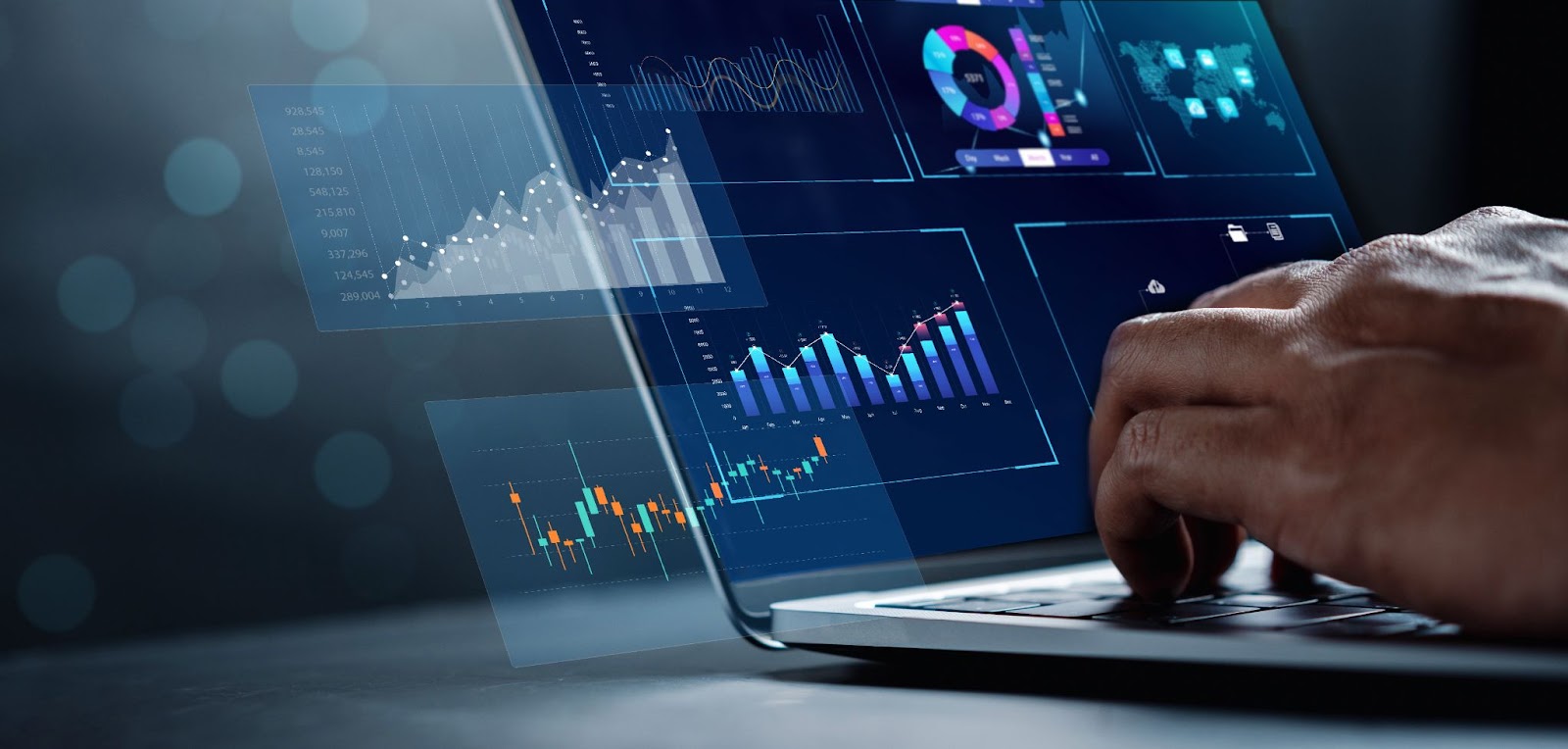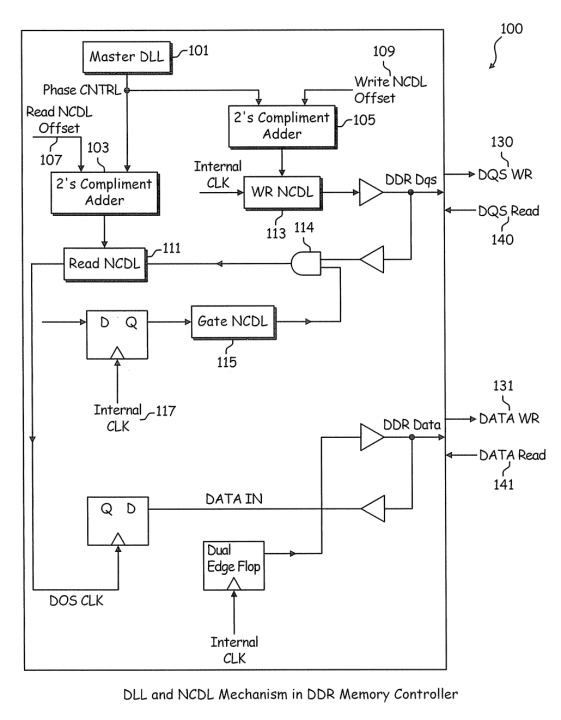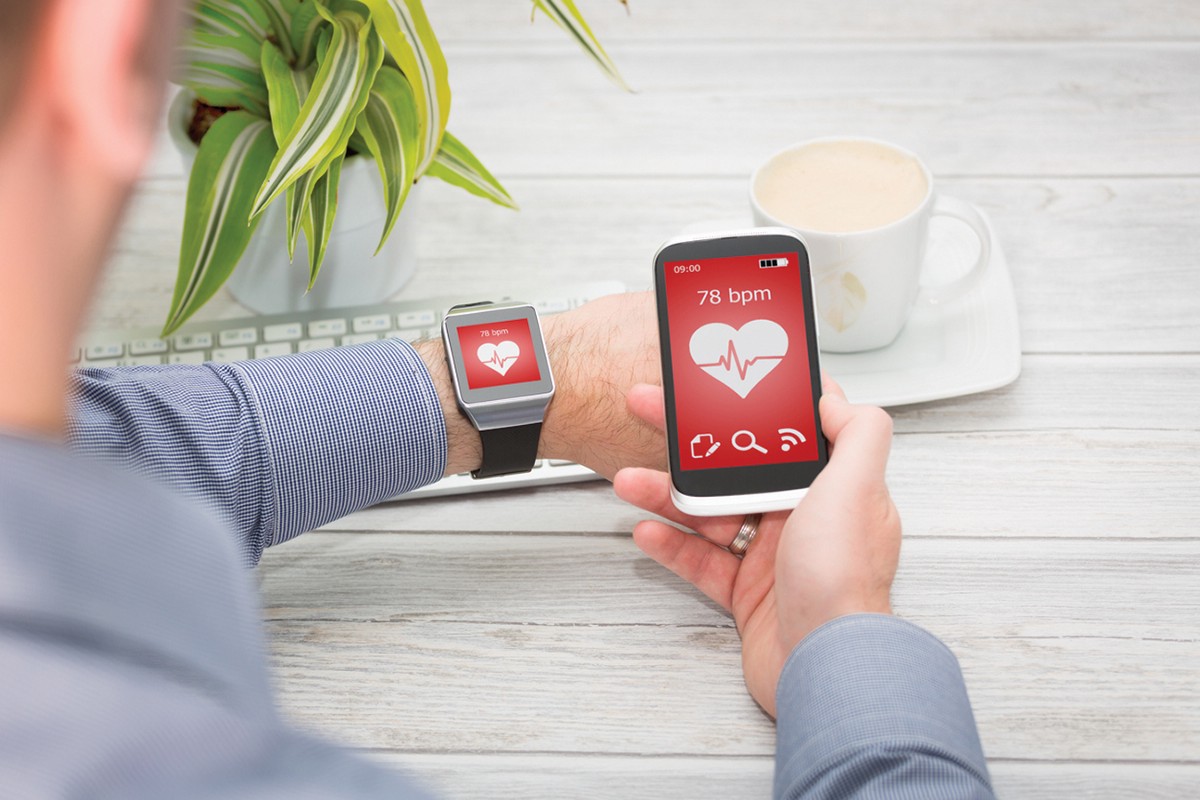
Wearable Technology Patents Case Study
Although consumer trends spur innovative ideas, turning an idea into an invention may not always be a viable solution. Even if the idea is patentable, it’s important to determine if the invention is commercially valuable.
To do this, let’s analyze the intellectual property landscape of the technology sector. This case study explores the consumer trend of heart rate monitoring. Then, we take our IP research results and determine if investing in a medical device and wearable technology patents are viable.
Heart rate monitoring accelerates wearable technology demand
Over the past few years, more people have started to track their heart rate using new medical devices and wearable technologies. These technologies, such as heart rate watches, help people track resting and active heart rates to get a better understanding of their health.
Consumer demand has grown as people are starting to pay more attention to their heart rate zones. There are many reasons why people are tracking their heart rate. Some people are tracking so they can get a better understanding of their overall fitness level, while others may just be intrigued with what is going on. For example, one couple in New York City determined they were pregnant based on the inconsistencies in her Fitbit heart rate monitor. Workout studios like OrangeTheory Fitness base their classes on individual target heart rate zones. Further, companies continue to invent clothing, jewelry, and accessories allowing people to determine their heart rate throughout the day.
IP Research Tactics to Determine if a New Technology is Commercially Valuable
If you were to invent a new consumer technology that helps track people’s heart rate, here are a few steps you would take to assess if you should pursue filing a patent. For IP owners, the key to that determination is to see if others are developing and transacting in the space:
- Understand industry activity through patent filing trends
- Analyze transactions through patent assignments and IP intelligence
- Research current technology news
- Find potential partners/competitors through IP connections
Understand Industry Activity for Heart Rate Technology
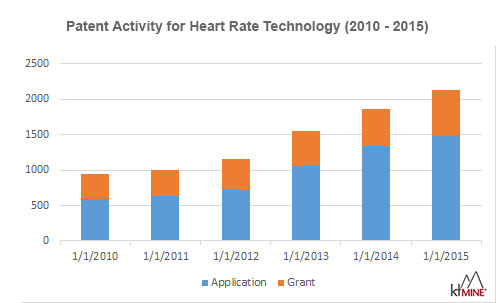
Source: Patents tab in ktMINE Search application. Technology: heart rate. Updated August 18th, 2017.
Growth Rate:
Applications: 149.83%
Grants: 85.80%
The growth rate for heart rate technology in both applications and grants has increased from 2010 to 2015. Even though the data from 2016 is still coming in, it is projected to bring an increase in patent activity. This signals that there is active development occurring for the overall heart rate market, including medical devices and wearable/consumer technology.
The next question we would ask is, “Are transactions occurring in this space?”
Analyze Transactions in Heart Rate Technology
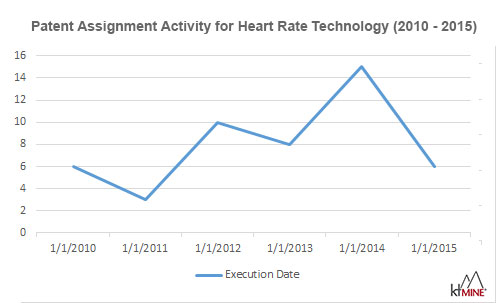
Source: Patent Assignment tab in ktMINE Search application. Technology: heart rate. Updated August 18th, 2017.
Over the five years beginning in 2010, there were 48 transactions of heart rate technology executed between companies. Compared to the number of applications/grants, this number seems to be lower than expected, as it shows limited transaction activity.
However, there are other ways to analyze transactions in this technology space. After researching the transactions, you find that most of the company-to-company movement is in wearable technology. For example, Beddit has assigned patents to Apple, who has developed consumer technology in the heart rate space:
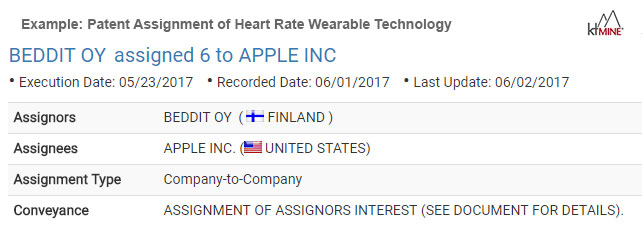
Source: Patent application. Grouped by Current Owner. Updated August 18th, 2017.
Beddit creates a device that tracks sleep patterns, which is a feature that Apple Watches currently do not provide. Apple acquired Beddit in May, so we can predict they may bring this feature to their products. This could be a way that Apple is looking to stay competitive with other health tracking products like Fitbit or Jawbone.
Research News for Heart Rate Technology
After looking at activity in the industry and finding transactions, it is time to see what is happening in the news for heart rate technology. This will help fill in the story of what is happening in the industry by learning what people are talking about.
In 2015 there were 184 news articles, and in 2016 there were 154 articles related to IP news only. From the articles, we were able to learn that there are court cases in relation to heart rate technology, including the big case between Jawbone and Fitbit. There was also an article about how big companies like Nokia and Samsung are expanding their licensing agreements in the digital health market, which helped their overall revenue growth.
News Articles that stood out:
Revenue Growth at Nokia > Nokia and Samsung have expanded their licensing agreements in the digital health market.
Adidas vs Asics > Adidas filed a lawsuit on Asics claiming Asics is infringing on their fitness tracking patents.
Fitbit Acquires Pebble > Pebble is a smartwatch creator, and this makes people wonder if Fitbit is trying to expand out of just digital health.
Jawbone in the US > Fitbit won a legal battle against Jawbone that will prevent the company from selling some of its products in the United States.
Top Owners of Heart Rate Technology Patents
After researching current news articles, you have decided that you want to patent your wearable technology due to the activity happening in the industry.
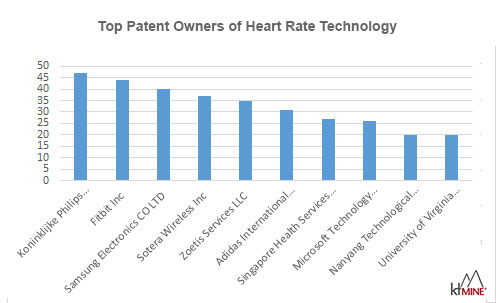
Source: ktMINE Patent application, grouped by Current Owner. Updated August 18th, 2017.
Looking at the list of the current owners, we can find potential partners to work with or be aware of the competitors in the wearable technology patents space. There are companies like Fitbit and Samsung who focus specifically on technology, but there are also companies like Adidas whose core business is outside of technology.
Final Analysis
After analyzing the data in ktMINE, we would move forward with our wearable heart rate technology patent for a few reasons:
- Strong activity in the industry
- Transactions happening with top players
- News proving that there is activity
- A strong list of potential partners
The next step now that we consider wearable heart rate technology needed by a group of companies, will be to confirm the potential value of the wearable technology. By researching past licensing transactions in the sector, we can determine what to expect to receive and start planning a patent monetization strategy. Being armed with this information will enable the commercialization process to move forward confidently.
